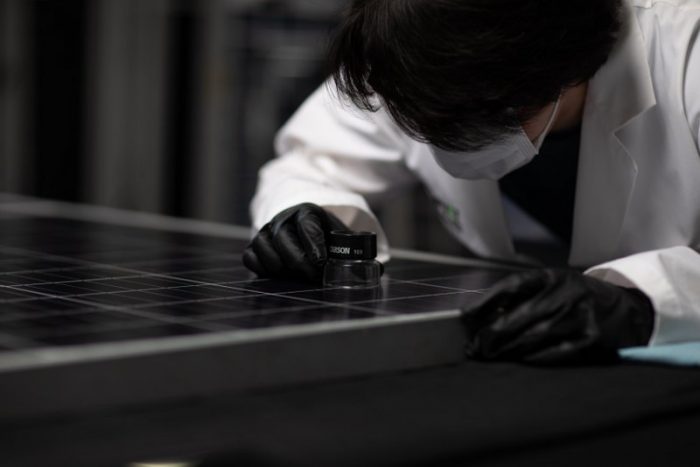
A record number of PV modules have earned Top Performer status according to the 2024 edition of the Kiwa PVEL PV Module Reliability Scorecard.
Kiwa PVEL is an independent lab renowned for quality and reliability testing of solar photovoltaic (PV) modules. This annual Scorecard provides the solar industry with a comprehensive resource of testing insights gained from Kiwa PVEL’s flagship Product Qualification Program (PQP). The PQP is a suite of extended reliability and performance tests that analyze modules across a range of conditions, from temperature and humidity effects in thermal cycling and damp heat to evaluating the impacts of mechanical stress and hail.
Published annually, the Scorecard aggregates the most important testing data from the PQP and is available as a free resource at scorecard.pvel.com. The full list of Top Performers is available on the site as a searchable database, where results can be filtered by PQP test, manufacturer name, module type, cell technology, and more.
Top Performing PV
In the 10th edition, Kiwa PVEL names a record of 53 manufacturers and 388 model types as “Top Performers” in one or more of the tests, with eight manufacturers named as Top Performers all categories.
“Our 2024 Scorecard showcases strong results across a diverse group of solar module manufacturers, which reflects the excellence and growth we have observed in PV manufacturing in recent years.” said Kevin Gibson, Managing Director of Kiwa PVEL. “For over a decade, we’ve tested assumptions about solar module reliability and performance while continuing to refine our methodology as the industry continues to innovate with new technologies and module designs.”
What accounts for the record number of Top Performers? Is it better quality control? Advances in technology? Maybe just more manufacturers submitting to Kiwa PVEL testing? The answer is all of the above, according to Tristan Erion-Lorico, Vice President of Sales and Marketing at Kiwa PVEL.
“A big part of it is an increase in manufacturers realizing their customers want more than certification testing and signing up for the Kiwa PVEL PQP. This is great for the industry as it allows buyers to make more informed purchasing decisions on a wider range of potential suppliers.”
Results in some test categories have also gotten better (or at least continued to be strong), such as for thermal cycling, LID+LETID and MSS.
“For all of those, we see over 80% of modules tested reach the Top Performer threshold, which is also great for the industry,” Erion-Lorico tells us.
PV Module Reliability Scorecard updates
It’s not just the module manufacturers tweaking their products — Kiwa PVEL has updated some of its testing procedures and grading metrics.
Example: The 2024 PV Module Scorecard has a higher bar for LID+LETID and PAN Top Performers, with a raised threshold for Top Performer qualification as technologies have improved. The LID+LETID Top Performer requirement is now a combined power loss of less than 1% (it was previously 2%).
“We changed this because gallium-dope PERC and n-type cells are showing negligible amounts of LID and LETID,” Erion-Lorico says.
The PAN Top Performer requirement is a simulated energy yield in the top quartile of all modules tested, which hasn’t changed from the previous requirement, but the actual threshold for being in the top 25% has increased by almost 1% for the kWh/kWp value.
“That’s also good news for the industry as it means module performance/energy yield is getting higher, mainly due to more TOPCon entering the market,” he says.
The 2024 Kiwa PVEL Module Scorecard also features
- A new Top Performer category for hail, highlighting modules that did not experience glass breakage with ≥40 mm hail,
- Better recognition of manufacturers who are Top Performers in multiple categories,
- Key takeaways on the impacts of various cell technologies and module designs, and
- The first deep dive into Kiwa PVEL’s Incidence Angle Modifier (IAM) test results.
Performance concerns from 2024?
“While we’re excited to see strong results in many tests and higher energy yields, we’re most concerned with our early UVID results which include a TOPCon module degrading by >16% in one case. That’s for a test with an in-field equivalent of 6 to 24 months (depending on the site location). That’s extremely high degradation on a module that likely has a 1% year-one power guarantee and a guaranteed ~0.4% annual degradation. At those rates, the module shouldn’t reach -16% power output until year 40.
Kiwa PVEL points out that research is still needed into the UVID mechanism and potentially recovery, but these results should give buyers some pause. “Make sure your modules are tested to confirm they are UV-stable.”
— Solar Builder magazine

Leave a Reply
You must be logged in to post a comment.